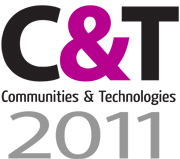The Present via the Past: An Archaeological Approach to Analysing the Design and Use of a Contemporary Urban Village
Abstract
This research applies an archaeological lens to an inner-city master planned development in order to investigate the tension between the design of space and the use of space. The chosen case study for this thesis is Kelvin Grove Urban Village (KGUV), located in inner city Brisbane, Australia. The site of this urban village has strong links to the past. KGUV draws on both the history of the place in particular along with more general mythologies of village life in its design and subsequent marketing approaches. The design and marketing approach depends upon notions of an imagined past where life in a place shaped like a traditional village was better and more socially sustainable than modern urban spaces. The appropriation of this urban village concept has been criticised as a shallow marketing ploy. The translation and applicability of the urban village model across time and space is therefore contentious.

KGUV was considered both in terms of its design and marketing and in terms of a reading of the actual use of this master planned place. Central to this analysis is the figure of the boundary and related themes of social heterogeneity, inclusion and exclusion. The refraction of history in the site is also an important theme. An interpretative archaeological approach was used overall as a novel method to derive this analysis.
Team
- Nicole Garcia (MA(Res) Student)
- Prof. Greg Hearn (Principal Supervisor)
- Dr Marcus Foth (Associate Supervisor)
Publications
Garcia, N., Foth, M., & Hearn, G. (2009, in press). Encounters and content sharing in an urban village: Reading texts through an archaeological lens. In K. Willis, G. Roussos, M. Struppek, & K. Chorianopoulos (Eds.), Shared Encounters: Content Sharing as Social Glue in Public Places. Heidelberg, Germany: Springer. Accepted 22 Dec 2008. (eprints >)


